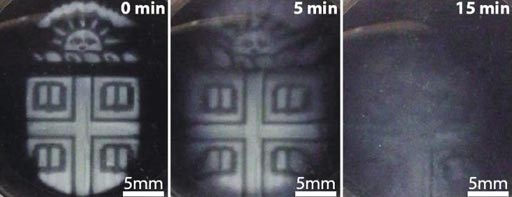3D Printing Used to Create Degradable Microfluidic Devices
By LabMedica International staff writers
Posted on 21 Sep 2017
A team of bioengineers modified the stereolithographic three-dimensional printing technique to create a series of microfluidic devices from biocompatible and degradable materials.Posted on 21 Sep 2017
The stereolithographic technique is based on a computer-guided ultraviolet laser that traces patterns across the surface of a photoactive polymer solution. The light causes the polymers to coalesce, forming covalently bound, solid three-dimensional structures within the solution. The tracing process is repeated until an entire object is built from the bottom up.

Image: A modified three-dimensional printing technique was used to create temporary microstructures that could be degraded on demand using a biocompatible chemical trigger (Photo courtesy of the Wong Laboratory, Brown University).
Investigators at Brown University (Providence, RI, USA) modified this technique by printing on hydrogels using noncovalent (ionic) crosslinking, which enabled reversible patterning with controlled degradation. They demonstrated the feasibility of this approach using sodium alginate, photoacid generators, and various combinations of divalent cation salts, which could be used to tune the hydrogel degradation kinetics, pattern fidelity, and mechanical properties.
The investigators described in the September 5, 2017, online edition of the journal Lab on a Chip how they used this technique to prepare template perfusable microfluidic channels within a second encapsulating hydrogel for T-junction and gradient devices. Degradable alginate barriers were used to direct collective cell migration from different initial geometries, revealing differences in front speed and leader cell formation. The presence and degradation of printed alginate microstructures were further verified to have minimal toxicity on epithelial cells.
"The idea is that the attachments between polymers should come apart when the ions are removed, which we can do by adding a chelating agent that grabs all the ions," said senior author Dr. Ian Wong, assistant professor of engineering at Brown University. "This way we can pattern transient structures that dissolve away when we want them to. We can start to think about using this in artificial tissues where you might want channels running through it that mimic blood vessels. We could potentially template that vasculature using alginate and then dissolve it away like we did for the microfluidic channels."
Related Links:
Brown University













